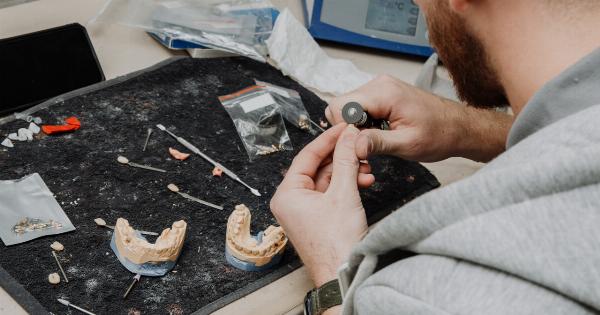Today, we have the privilege of sitting down with Dr. Maria Katsarou, a renowned medical expert and pioneer in the field of biopsies. Dr.
Katsarou has recently developed a groundbreaking new technique that is set to revolutionize the way we diagnose and treat various diseases. Join us as we delve deeper into her innovative approach and its potential implications in the medical field.
The Evolution of Biopsy Techniques
Dr. Katsarou starts by providing us with some background on the traditional biopsy methods that have been used for years.
According to her, these methods often involve invasive procedures that can cause significant discomfort and potential complications for patients. The results also take a considerable amount of time to be obtained, leading to delays in diagnoses and subsequent treatments.
With a passion for finding a better alternative, Dr. Katsarou began researching and experimenting with new techniques.
After several years of dedication, she developed a revolutionary biopsy procedure that is minimally invasive, highly accurate, and delivers results in a matter of hours.
The Innovative Biopsy Technique
When asked to explain the essence of her groundbreaking technique, Dr. Katsarou emphasizes that it is based on the principle of liquid biopsies.
The conventional biopsies involve extracting tissue samples from the affected area, whereas her new technique analyzes the DNA, RNA, proteins, and other biomarkers present in a patient’s bodily fluids.
This non-invasive approach offers several significant advantages. Firstly, it eliminates the need for surgical interventions, making it far less stressful and risky for patients.
Secondly, it allows for faster and more precise diagnoses, enabling prompt and accurate treatment decisions. Lastly, the liquid biopsy technique is repeatable, which means doctors can monitor treatment progress and make necessary adjustments as needed.
Applications and Benefits
Dr. Katsarou explains that her new biopsy technique has a wide range of applications across various medical fields.
It can be used to diagnose and monitor the progression of cancer, cardiovascular diseases, autoimmune conditions, and even neurodegenerative disorders.
In addition to the diagnostic advantages, this technique also has significant implications for personalized medicine.
By analyzing the genetic information obtained through liquid biopsies, doctors can tailor treatments to individual patients, maximizing effectiveness and minimizing side effects.
Furthermore, the accessibility of this minimally invasive procedure opens up possibilities for more frequent screenings and check-ups.
Patients can undergo the liquid biopsy regularly, enabling early detection and intervention, potentially saving countless lives.
Challenges and Future Developments
While the new biopsy technique brings great promise, Dr. Katsarou acknowledges that there are still challenges to overcome. The primary concern is ensuring the accuracy and reliability of the results obtained from liquid biopsies.
As such, Dr. Katsarou’s research team is working tirelessly to refine the technique and optimize its sensitivity and specificity.
The objective is to minimize false positives and negatives, ensuring that patients receive accurate diagnoses and appropriate treatments.
Looking ahead, Dr. Katsarou sees the potential for further advancements in the field of liquid biopsies.
She believes that as technology continues to improve, it will be possible to detect and analyze an even wider range of biomarkers, allowing for more comprehensive medical assessments and early disease detection.
Conclusion
Dr. Maria Katsarou’s innovative biopsy technique represents a significant leap forward in the field of medical diagnostics.
By replacing conventional invasive methods with minimally invasive liquid biopsies, this breakthrough offers faster, more accurate diagnoses while reducing patient discomfort and risks.
This groundbreaking technique has the potential to transform various medical fields, enabling personalized medicine, frequent screenings, and early disease detection. While challenges remain, Dr.
Katsarou’s dedication and ongoing research promise further developments in the field and improved patient outcomes.




























